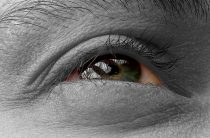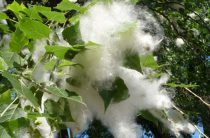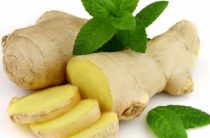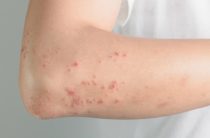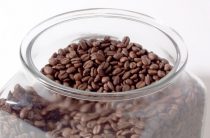Babies are considered very fragile creatures that have recently appeared in our world. Their body must adapt to many external factors. Children who have strong immunity are not afraid of most problems. But such a phenomenon as an allergy in infants is very common. It is very important to initially determine the causes, factors that influenced its occurrence.
Changing the diet of a nursing mother and the introduction of new products is not very scary, like a reaction to complementary foods. When an allergy in a baby is hereditary, it takes a long time to eliminate it.
Most often, the risk of allergies in a child can be identified before birth. For this purpose, a questionnaire is filled out. If one of the parents is allergic, the probability of transmitting the allergy to the child is 30%, when both parents are allergic - about 90 percent. And often the crumbs develop neurodermatitis. But it is necessary in each individual case, to find out the cause of the allergy.
Food allergies in babies
It is true that 95% of infants have food allergies. It occurs on various kinds of products that enter the body, both eaten independently and through mother's milk. For this reason, pediatricians urge nursing mothers to be very responsible about the products they eat and to introduce new dishes into their menu very carefully. Vegetables and fruits consumed by a nursing mother are very useful. But if, because of this, the child begins to develop a rash on the cheeks or legs, you should immediately reconsider your diet.
The following foods can cause allergies:
- Vegetables and fruits that have a bright color (orange and red). Therefore, it is worth stopping eating citrus fruits, tomatoes, carrots and other foods.
- Red fish and caviar;
- Nuts, especially peanuts;
- Sweet foods;
- Highly carbonated drinks with dyes.
It is necessary to exclude products that provoke allergies in infants, or to replace them. No need to limit yourself in everything, do not eat any fruits and vegetables. The key is to eat in moderation. It is necessary to take into account that a sufficient amount of proper and tasty food gets into the body of a nursing mother. You should not be too zealous a mother who consumes only lean chicken meat in very large quantities, thereby bringing herself to a bad state, suffering from severe stomach pains due to severe exhaustion.
Often, allergies begin in infants, who are introduced to new products. Such complementary foods can provoke the appearance of a rash, pain in the stomach. An improperly prepared dish or its incorrect dosage can lead to the fact that the child begins to develop allergy symptoms. But this does not mean that in the future he will never again need to be given this product to eat. You just need to just wait a little, and then feed the child with similar products. It is easy to eliminate a disease such as food allergies. But this should be taken into account if the child is not allergic to milk or protein.
Eating cow's milk proteins can trigger allergies in newborns and one-year-olds. Symptoms of this disease can be completely eliminated by eliminating milk proteins from the diet.
An immune system reaction such as cow's milk allergy is considered one of the most common types of food allergies in newborns and infants. It is caused by the reaction of the defense system to proteins.
Such protein can enter the baby's body through breastfeeding if the nursing mother consumes dairy products. Therefore, according to many doctors, the only way out of this situation is to stop eating cow's milk while breastfeeding. Often, allergies disappear after a person reaches a certain age.
Factors that cause allergies to dairy products
One of the main causes of allergies in a child is the diet of his mother. This statement is true, but you should also not forget about other factors that can have a strong influence on the child. According to natural feeding consultants, often allergy symptoms are greatly reduced or disappear altogether when parents improve the overall climate of the apartment, control what the child comes into contact with. The most common allergens are:
- Children's cosmetics;
- Rinsers. It is necessary not to use them at all, or not to apply them to children's clothes;
- Washing powders. Use only those that are designed specifically for children, rinse clothes well after washing;
- Perfumes and cosmetics. A reaction may develop to these funds, which are used by the mother and close relatives.
Lactation
There are times when a mother realizes that the child is reacting to the foods that she eats. Unfortunately, this often leads her to think that the best solution would be to transfer the child to the mixture. Not very competent doctors can support such an idea and tell the mother that the child has an "allergy to breast milk." But this is impossible, because in fact, breast milk is not an allergen, it carries foreign proteins that penetrate into it from the mother's food.
Allergy symptoms
Symptoms of an allergy to cow's milk cover several organs and systems at once. So, it can affect the food tract, skin, respiratory tract, so a person develops skin rashes, eczema, itching, frequent regurgitation, diarrhea, colic, wheezing. And these symptoms provoke constant crying, irritability, restless sleep. Often, reactions occur instantly. But there are cases when the manifestations of allergies become noticeable 3-5 days after a person has taken more food than necessary. Because of this, itching of the skin, diarrhea appears.
So, all allergy symptoms are divided into two groups: slow and fast.
Slower (more common) ones include:
- Diarrhea;
- Vomit;
- Nausea;
- Lack of appetite;
- Increased irritability;
- Colic;
- rashes;
Eczema.
This type of reaction is quite difficult to determine due to the fact that its symptoms are similar to other diseases. Most people outgrow their allergies after they reach the age of two, or adolescence.
Rapid reactions appear very sharply and unexpectedly, the patient shows the following symptoms:
- Irritability;
- Vomit;
- Dyspnea;
- swelling;
- severe itching;
- rashes;
- Other irregularities on the skin;
- Severe diaper rash in the groin;
- Quincke's edema;
- Diarrhea with bloody discharge.
In some cases, there is a very severe manifestation of allergies - anaphylactic shock. It can occur when a person consumes peanuts, nuts, citrus fruits.
This is not a complete list of symptoms that may occur in infants due to allergies. Therefore, you should be especially careful when eating various foods.
Malfunctions of the gastrointestinal tract
The main manifestation in children under one year old will be loose stools. It appears due to the fact that the digestive system cannot perform its functions normally:
- In the feces there are food remnants resembling curdled milk;
- Vomiting may occur, and in infants frequent regurgitation.
Violation of the skin
Child skin lesions can manifest themselves in the following forms:
- Milk scab - a small crust on the child's head;
- Children's eczema - rashes that appear in the form of bubbles, and then as erosion.
- Atopic dermatitis - plaques on the knee and elbow folds, covered with scales.
- Quincke's edema.
- Urticaria - skin rashes that look like nettle burns. They itch a lot, and therefore a person combs his skin until it bleeds. Because of this, the likelihood of infection increases dramatically.
In order to completely get rid of the symptoms of such an allergy, you need to feed your baby with mixtures without proteins, which are specially made for newborns and one-year-old children. If your child has an allergy to cow's milk, you should immediately visit a doctor to find out what treatment should be carried out. As mentioned above, while breastfeeding, the mother's diet should not include any dairy products.
Lactose intolerance is the inability to digest milk sugar (lactose). This disease is caused by a small amount of the lactase enzyme, which is responsible for the digestion of milk sugar. The immune system is not activated, so the allergic reaction does not occur. The presence of vomiting, pain in the abdomen, bloating, diarrhea indicates that a person has lactose intolerance.
The skin and respiratory tract are not affected. So that a person does not have a similar reaction, he needs to not eat foods containing lactose, namely, all varieties of milk and dairy products. Today, there are many foods that allow you to eat a balanced diet without harm to health with a disease such as lactose intolerance. Many stores stock dairy products and milk that are lactose-free, so they can be great substitutes.
Soy and other types of milk
Children whose bodies do not respond well to cow's milk proteins are susceptible to allergic reactions from cow's milk, soy milk and the milk of other mammals.
Soy milk
Before formulas were approved that included amino acids, hydrolyzed proteins, those that included soy and soy milk were widely used.
So, babies with an allergy to cow's milk could only eat such a dietary product as soy. Formulas for children include soy protein, which is extracted from soy flour, a mixture of carbohydrates (sucrose and corn syrup). But the American Academy of Pediatrics does not recommend feeding soy products to children under six months of age. Here are some reasons not to: Half of the children who are allergic to cow's milk can't eat soy protein either.
Due to the fact that the biological value of soy protein is less than the proteins of breast or cow's milk, the child will grow more slowly or not gain weight fast enough.
Also, due to the content of phytoestrogen in soy milk, the child's body can be influenced by hormones similar to women's.
Other types of milk
In many countries, in order to feed children, milk types of various mammals are used, such as: goats, sheep, buffaloes, mares. But nevertheless, the World Health Organization does not recommend using them, as well as soy milk for feeding children who have food allergies. This is due to the fact that not all types of milk are rich in vitamins and minerals that a child’s body needs. So, such milk may not contain folic acid, vitamins B6, B12, C and D. Children with intolerance to cow's milk proteins also react poorly to other types of milk. Mixtures that are made to prevent allergies are called prophylactic and are not suitable for its treatment.
Another option is cereal milk, which, like soy milk, is not suitable for feeding children. Its unenriched formula does not contain the nutrients your baby needs, such as amino acids, calcium, iron, and some vitamins.
Before you start feeding your baby one of these types of milk, you need to undergo a medical examination to make sure that the child's body reacts normally to the milk of other mammals and soy.
Diagnosis of milk allergy
When you begin to suspect that your child has a milk allergy, you should immediately contact a doctor. He will learn about a family history, allergic diseases, food intolerances, and will issue referrals for tests.
To detect a milk allergy, the doctor may order tests or tests to rule out any other causes of the child's illness.
Together with urine and stool tests, the doctor prescribes a subcutaneous allergy test. Its essence lies in the fact that the patient is injected with a small amount of milk protein under the surface of the skin. If a blister forms at the site where the injection was given, then the child has an allergy to milk.
It is possible to conduct test feeding right in the doctor's office, or in a hospital, in order to observe the manifestations of an allergic reaction. Such a test can be carried out several times in order to make an accurate diagnosis.
How does an allergy manifest in a baby?
When a baby develops an allergy to a certain product, medicine, cosmetic product, complementary foods, the reaction will not take long. There may be a few spots on the cheeks, or a severe rash on the buttocks, dermatosis on the legs, peeling of the scalp, slight puffiness in the form of "bags under the eyes", vomiting after eating, diarrhea, watery discharge from the nose. Any substance can provoke an allergy, so it is worth observing what it comes into contact with.
very carefully monitor what the child comes into contact with. Any change that happens to a newborn does not appear without a good reason, they are an indicator of quite serious problems. At the first manifestation of allergic reactions, you should immediately contact your pediatrician. It is not necessary that you need to take antihistamines to get rid of an allergic rash, it may be enough to exclude the allergen.
The most common mistake parents make is to externally relieve allergic symptoms by using baths, creams and ointments. If the child's symptoms disappear in this way, this does not mean at all that the allergy has receded. She just disguised herself well. To find out how effective these activities are, you need to check how the child feels every day. So, wiping the rashes with a solution of furacilin, bathing it in the infusion of the string, and generously spreading it with “Sudokrem”, we see how scales and redness disappear. But we cannot find out whether the allergy has passed.
Cow's milk is considered one of the strongest and most common allergens. It has been found to cause allergies in 1.5% of breastfed infants in their first year of life and in 7% of formula fed infants. More than twenty different allergens are present in milk, each of which is antigenic in its own way. The most important of these is casein. This is the main protein of milk, which makes up eighty percent of the entire mixture. It is characterized by thermal stability (it has a constant structure during curdling), so patients with intolerance to this component cannot consume boiled milk and fermented milk products. Allergy sufferers may have cross-reactions to milk from other animals containing casein.
Milk allergy treatment
Every parent thinks about the issue of treating allergies in babies. After all, as mentioned earlier, eliminating the symptoms does not mean curing. To get rid of allergies in infants, you need:
- Change the mother's diet, remove all allergenic foods from it;
- Refuse to feed;
- Do not use antihistamines, because they are contraindicated for children who have not reached one year of age;
- In small quantities, use "Enterosgel";
- Take lactobacilli in order to settle beneficial bacteria in the intestines;
- Often do hygiene procedures, refuse any cosmetics.
By following these requirements, you can quickly eliminate allergies in an infant. Along with the external manifestations, the internal ones will soon disappear.
You should consult with a doctor or nutritionist about finding other foods that would saturate the body with calcium, other vital nutrients. Thus, it will be possible to refuse to take dairy products, without fear of harming the child.
Very often, milk is recommended to be replaced with soy protein. But if the baby also has soy intolerance, hypoallergenic nutrition can be recommended - products in which protein molecules are split, and therefore the chance of provoking an allergic reaction is much less.
There are two main types of hypoallergenic formula on the market today:
Intensively hydrolyzed , containing cow's milk proteins, which are broken down into smaller pieces and therefore less allergenic. Most children have a good tolerance to this diet, but despite this, some manifestations of allergies may continue to occur.
Baby food containing amino acids . In such a product, proteins are presented in the simplest form, so it is suitable for those children who continue to develop allergies even after they have switched to a highly hydrolyzed diet.
There are also "partially hydrolysed" products . They are not recommended for allergic children because they are not hypoallergenic.
It is possible to create a special hypoallergenic formula only in special pharmaceutical conditions. It is impossible to do this at home. Any substitutes for cow's milk - goat, rice, almond milk are not completely safe, so they should not be used by children.
After the child has switched to one of the formulas, a gradual disappearance of symptoms will be noticeable. Finally, they should disappear after a month. Most often, doctors give a recommendation to feed the child with a hypoallergenic formula until he is one year old, and then accustom him to cow's milk.
How long does it take for a milk allergy to go away in a baby?
The great rush of parents who want their child's allergies to go away as soon as possible has no limits. It `s naturally. After all, they are aimed at protecting your child from any discomfort. The time it takes for allergy symptoms to disappear is different for each child. In some children, the symptoms become less noticeable after two or three days of treatment, and completely disappear after a week. In especially advanced cases, symptoms after the start of treatment may occur for another month. Along with peeling, diaper rash, redness, swelling and fluid from the nose appear.
Food allergies in babies
It is not worth worrying about the fact that the baby has allergic reactions to products. Indeed, to eliminate the symptoms, it will be enough to exclude them from the usual diet. It's about both the mother and the baby. You should not be afraid that such reactions will occur in the future. Since, with age, more and more enzymes and beneficial microorganisms are formed in the intestines of the child, digestive problems will no longer bother. The exceptions are lactose and protein intolerance.
diet for mom
When a child has a tendency to allergies, he reacts to the product that his mother ate in just a few minutes. And in most cases, it takes from four hours to a day to eliminate the allergy. Greater uncertainty is introduced by the fact that before any reaction appears, the allergen must accumulate in the body. For this reason, situations may arise when, for several months, the mother has been drinking milk, there are no allergic rashes in the child, and suddenly, in a few days, the baby develops neurodermatitis. In such a situation, it is not necessary that the baby will quickly recover. After all, it takes at least a week for the mother to remove the allergen from her menu, and about two weeks for all the symptoms to disappear.
The most common allergen in young children is cow's milk protein. That is why most of the problems arise because of the existing stereotypes that tea with the addition of milk, or warm cow's or goat's milk increase lactation. But the truth is that there is no increase in the amount of breast milk from eating these foods, just warm temperature drinks contribute to the rush. This means that there is not an increase in the amount of milk, but the strength and speed of its stay increase. And due to the fact that the daily intake of milk by a nursing mother is more than 200 ml, the child will soon begin to show the following symptoms:
- Colic;
- Pain in the abdomen;
- gases;
- Green frothy stool.
If the nursing mother does not change anything in her diet, then very soon the symptoms will be supplemented by a rash on the skin, which will become more and more pronounced. It is for this reason that, first of all, with such symptoms, you need to completely abandon dairy products, you can leave, perhaps, cheese. In many cases, this is enough to forget about the problem. When the baby's mother is afraid that her baby will not get enough calcium, then you should eat cabbage, spinach, broccoli, liver, almonds and Brazil nuts, canned fish (you need to eat with bones).
You do not need to eat a lot of products that contain various chemical additives, fillers, preservatives, dyes. Vitamin complexes, drug shells, fluorine, iron, and certain herbal preparations can provoke allergies.
The reaction to fruits and vegetables that have a bright color is caused by the red pigment contained in the skin and pulp. Therefore, when a mother eats several glasses of cherries, it is almost certain that her child will develop a rash on her skin the next day. And as for the “red apples”, which are often used to frighten pregnant women in maternity hospitals, they are considered a fairly safe product. One apple with a peeled skin will not bring any harm to either a woman or her child.
Another very common allergen is gluten, a protein found in a number of cereals. Only buckwheat, corn, rice do not contain it, and therefore such cereals and breads from them are considered safer.
Mom should keep a food diary that lists any dietary adjustments and baby reactions. Do it in the following way. There are foods that have a low allergic potential, they need to be introduced into your menu one at a time in the morning and see what the child's reaction will be. When the reaction manifested itself quickly, you need to write down the name of the food and the day of the test, and give it next time no earlier than 2 months later. If the reaction occurs after a few hours, you can eat such a product again only after a month. If there is no reaction, you can safely enter the product into your menu. The group of such products includes hard cheese, horse meat, corn, pearl barley, pears, parsley, dill.
When you want to eat something sweet, you need to remember that sweets from the store are a threat. They are dangerous because they contain a lot of chemical additives. The reaction of children to white marshmallow, pale yellow marmalade is extremely acute.
You can find out more information about the symptoms of "milk" allergy in infants from our consultant.
